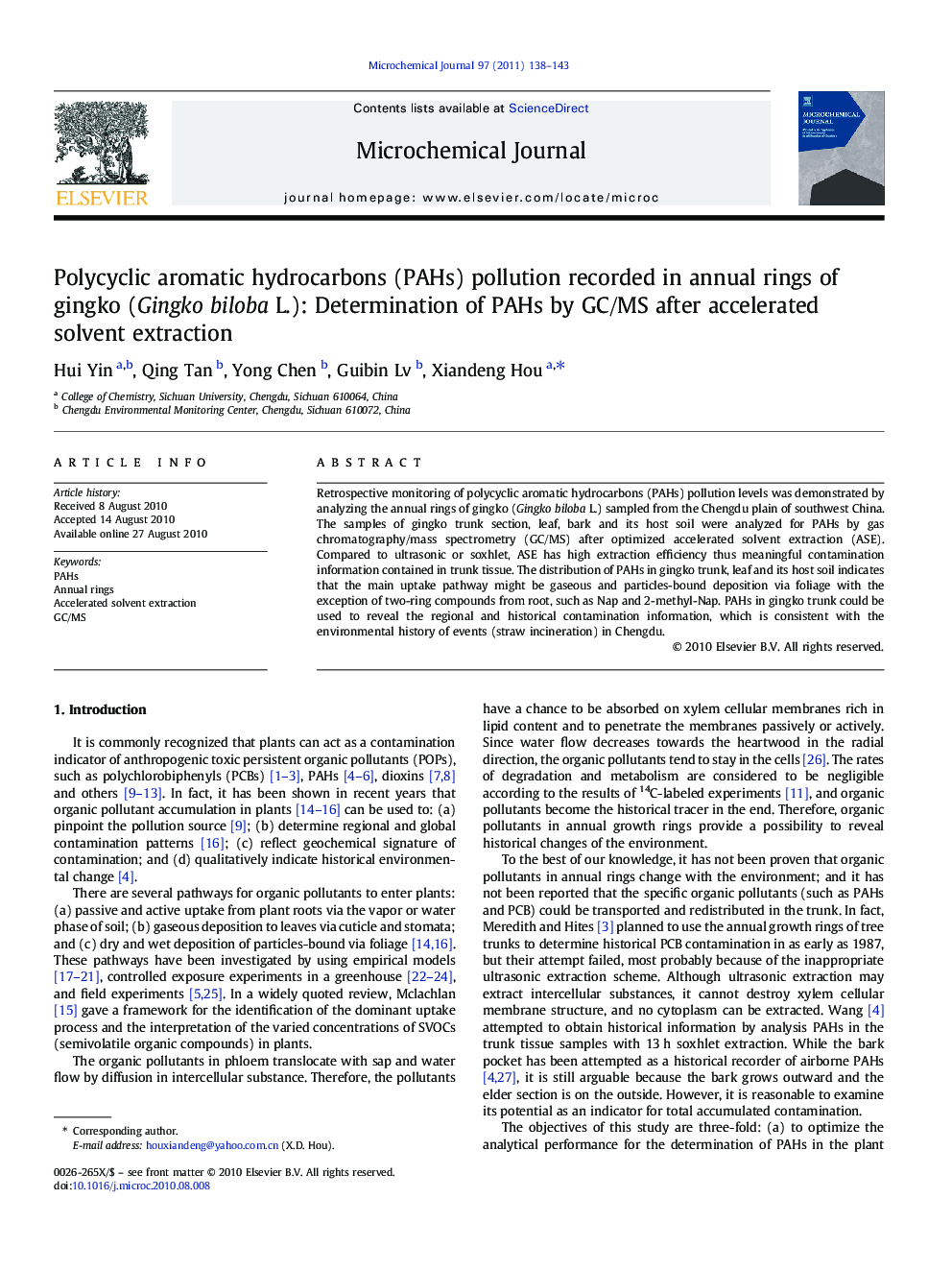| Article ID | Journal | Published Year | Pages | File Type |
|---|---|---|---|---|
| 1228126 | Microchemical Journal | 2011 | 6 Pages |
Retrospective monitoring of polycyclic aromatic hydrocarbons (PAHs) pollution levels was demonstrated by analyzing the annual rings of gingko (Gingko biloba L.) sampled from the Chengdu plain of southwest China. The samples of gingko trunk section, leaf, bark and its host soil were analyzed for PAHs by gas chromatography/mass spectrometry (GC/MS) after optimized accelerated solvent extraction (ASE). Compared to ultrasonic or soxhlet, ASE has high extraction efficiency thus meaningful contamination information contained in trunk tissue. The distribution of PAHs in gingko trunk, leaf and its host soil indicates that the main uptake pathway might be gaseous and particles-bound deposition via foliage with the exception of two-ring compounds from root, such as Nap and 2-methyl-Nap. PAHs in gingko trunk could be used to reveal the regional and historical contamination information, which is consistent with the environmental history of events (straw incineration) in Chengdu.
